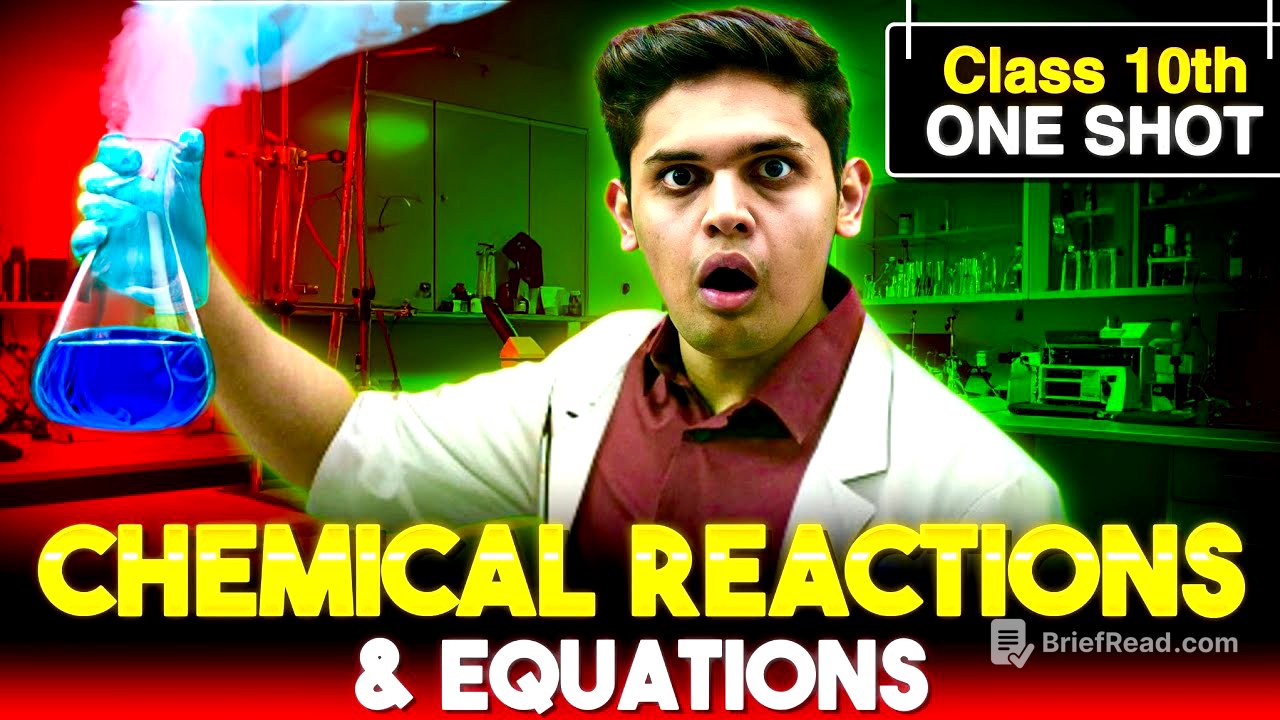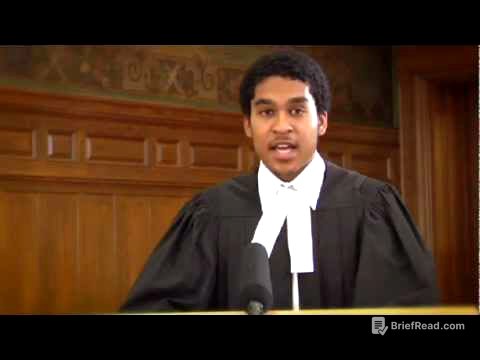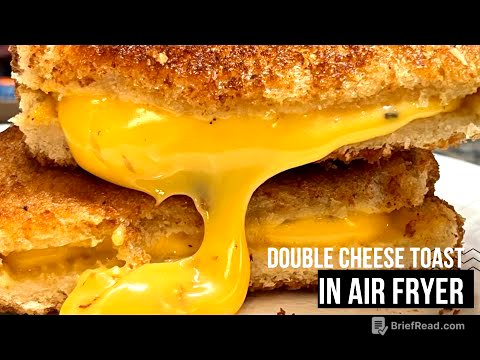TLDR;
This video is a comprehensive one-shot lecture on the Class 10th Chemistry chapter "Chemical Reactions and Equations" by Prashant Bhaiya. It covers various topics including physical and chemical changes, types of chemical reactions (combination, decomposition, displacement, double displacement), oxidation and reduction, corrosion, and rancidity. The lecture includes explanations of NCERT activities, important questions, and tricks to remember concepts and balance chemical equations.
- Physical and chemical changes are explained with examples.
- Different types of chemical reactions are discussed with real-life examples and activities.
- Balancing chemical equations is taught using both NCERT methods and a special PK method.
- Oxidation and reduction reactions are explained with tricks to identify oxidizing and reducing agents.
- Corrosion and rancidity are discussed with preventive measures.
Introduction [0:00]
Prashant Bhaiya introduces himself and the topic of the lecture: Chemical Reactions and Equations for Class 10th. He assures students that he will cover all important theory questions, NCERT activities, and questions likely to be asked in the exams. He emphasizes the importance of attentive listening and note-taking, promising to provide notes on Telegram.
Change: Physical and Chemical [2:19]
Change is defined as a process where the final state of a substance differs from its initial state. There are two types of changes: physical and chemical. Physical change involves changes in physical properties (e.g., ice melting into water), while chemical change involves changes in chemical composition (e.g., burning paper). An example question is presented to differentiate between physical and chemical changes, such as melting ice (physical), burning a candle (both physical and chemical), rusting of iron (chemical), tearing paper (physical), cooking food (chemical), and curd formation from milk (chemical).
Chemical Reactions and Equations [7:54]
A chemical reaction is defined as a process in which substances undergo transformation, resulting in the formation of new substances. A chemical equation is a way of representing chemical reactions using symbols and formulas. To understand chemical equations, basic knowledge of writing compounds is essential, referencing a table of valencies from Class 9th. The lecture emphasizes the importance of focus and introduces characteristics that indicate a chemical reaction has occurred, such as change in color, temperature (exothermic and endothermic reactions), state, evolution of gas, and formation of precipitate.
Writing and Balancing Chemical Equations [11:40]
The chapter explains how to write chemical equations, emphasizing the importance of knowing the valencies of elements and compounds. It reviews how to write chemical formulas, referencing a separate video for detailed instructions. The physical states of reactants and products (solid, liquid, gas, aqueous) are also important to include in the equation. Balancing chemical equations is crucial to adhere to the Law of Conservation of Mass, ensuring the number of atoms for each element is the same on both sides of the equation. The lecture introduces a step-by-step method for balancing equations, including creating a table of elements, reactants, and products.
Balancing Chemical Equations: Methods and Practice [17:33]
The lecture presents two methods for balancing chemical equations: the NCERT method and a special PK method. The NCERT method involves creating a table to balance the number of atoms on both sides. The PK method, which uses basic math, is introduced for more complex equations. The PK method involves assigning coefficients (a, b, c, d) to each compound, setting up equations based on the number of atoms, assuming a value for one coefficient (usually a=1), and solving for the others. Several examples are provided, including balancing the equation for the formation of water and ammonia.
Key Terms: Precipitate, Exothermic/Endothermic, Catalyst [27:52]
Key terms are defined: A precipitate is an insoluble solid that settles down after a chemical reaction. Exothermic reactions release heat, while endothermic reactions require heat. A catalyst is a substance that speeds up chemical reactions without being consumed. The catalyst is explained through a story of Mintu Lal, who instigates a fight between Chintu Lal and his lover without directly participating.
Types of Chemical Reactions: Combination Reactions [30:37]
The lecture transitions to the types of chemical reactions, starting with combination reactions, where two or more reactants combine to form a single product. The first activity involves burning a magnesium ribbon, which combines with oxygen to form magnesium oxide. The magnesium ribbon must be cleaned to remove the layer of magnesium oxide. The burning occurs with a white dazzling flame, producing a white-colored ash of magnesium oxide. The second activity involves the reaction of calcium oxide (lime) with water to form calcium hydroxide (slaked lime), releasing heat (exothermic). Slaked lime is used for whitewashing and reacts with carbon dioxide in the environment to form calcium carbonate, giving walls a shiny finish. The lime water test for carbon dioxide is also explained.
Exothermic and Endothermic Reactions Examples [39:33]
The lecture provides examples of exothermic and endothermic reactions. Exothermic reactions include the combustion of methane, decomposition of vegetable waste, burning of magnesium ribbon, reaction of quick lime with water, and respiration. Endothermic reactions include photosynthesis and decomposition reactions.
Types of Chemical Reactions: Decomposition Reactions [44:03]
Decomposition reactions involve a single compound breaking down into two or more simpler substances. There are three types of decomposition reactions: thermolysis (using heat), electrolysis (using electricity), and photolysis (using light). Thermolysis examples include heating calcium carbonate to produce quick lime and carbon dioxide, heating ferrous sulfate crystals, and heating lead nitrate.
Thermolysis Reactions: Ferrous Sulfate and Lead Nitrate [46:16]
The decomposition of ferrous sulfate (FeSO4.7H2O) involves first losing water molecules upon heating, changing from green to white. Further heating decomposes it into ferric oxide (Fe2O3), sulfur dioxide (SO2), and sulfur trioxide (SO3). The decomposition of lead nitrate (Pb(NO3)2) produces lead oxide (PbO), nitrogen dioxide (NO2), and oxygen (O2). The lecture emphasizes remembering the balanced equations and the colors of the compounds and gases involved.
Electrolytic Decomposition of Water [53:42]
Electrolytic decomposition involves using electricity to break down a compound, with water being the primary example. Adding a little acid to the water increases its conductivity. The process involves two electrodes: a cathode (negative) and an anode (positive). At the cathode, hydrogen gas is formed, while at the anode, oxygen gas is formed. The ratio of hydrogen to oxygen collected is 2:1 by volume. The pop sound test for hydrogen gas is explained, and the effect of placing a burning candle near the cathode and anode is discussed.
Photolytic Decomposition Reactions [59:38]
Photolytic decomposition involves using light to break down a compound. A key example is silver chloride (AgCl), which is white but turns grey when exposed to sunlight, decomposing into silver (Ag) and chlorine gas (Cl2). Silver bromide (AgBr) also undergoes a similar reaction. These reactions are used in black and white photography. Silver chloride is stored in black bottles to prevent decomposition.
Displacement Reactions [1:03:25]
Displacement reactions involve a more reactive element displacing a less reactive element from its compound. The lecture uses the analogy of Mintu Lal, who is more powerful, displacing Chintu Lal from his lover's life. A reactivity series table is presented, and a trick using "Katrina asked for a car Alto Zen Ferrari still hi why did you get a silver Audi" is provided to remember the order of reactivity.
Displacement Reactions: Activities and Examples [1:07:25]
The lecture explains displacement reactions with activities and examples. Adding zinc granules to sulfuric acid (H2SO4) results in zinc displacing hydrogen, forming zinc sulfate (ZnSO4) and releasing hydrogen gas (H2). Placing iron nails in a copper sulfate (CuSO4) solution results in iron displacing copper, forming ferrous sulfate (FeSO4) and depositing copper on the nails. The blue copper sulfate solution turns green due to the formation of ferrous sulfate.
Double Displacement Reactions [1:11:45]
Double displacement reactions involve two compounds exchanging their ions. The lecture uses an analogy of IPL team supporters exchanging friends. Two activities are explained: mixing lead nitrate (Pb(NO3)2) with potassium iodide (KI) forms lead iodide (PbI2), a yellow precipitate, and potassium nitrate (KNO3). Mixing barium chloride (BaCl2) with sodium sulfate (Na2SO4) forms barium sulfate (BaSO4), a white precipitate, and sodium chloride (NaCl).
Characteristics of Chemical Reactions Revisited [1:17:49]
The lecture revisits the characteristics of chemical reactions, including change in color, change in temperature, change in state, evolution of gas, and formation of precipitate, providing examples for each.
Oxidation and Reduction Reactions [1:18:57]
Oxidation is defined as the addition of oxygen or removal of hydrogen, while reduction is the addition of hydrogen or removal of oxygen. Redox reactions involve both oxidation and reduction occurring simultaneously. The lecture introduces the terms reducing agent and oxidizing agent, providing a trick to identify them: write down which substance is reduced and which is oxidized, then swap them (the reduced substance is the oxidizing agent, and vice versa).
Redox Reactions: Identifying Agents and Copper Oxidation [1:21:36]
The lecture provides an example of a redox reaction and explains how to identify the reducing and oxidizing agents using the trick. The oxidation of copper is explained, where copper reacts with oxygen to form copper oxide, which is black. Passing hydrogen gas over the black copper oxide reduces it back to shiny brown copper.
Corrosion and Rancidity [1:27:28]
Corrosion is the process where metal surfaces are attacked by substances like oxygen, moisture, and acid. Different metals have different names for corrosion: rusting for iron, tarnishing for silver, and a green coating for copper. Rusting requires both air and water. Tarnishing of silver is due to sulfides in the environment forming silver sulfide, which is black. Copper reacts with carbon dioxide and water to form copper carbonate, which is green. Rancidity is the oxidation of fats and oils in food items, leading to unpleasant smells and tastes. Methods to prevent rancidity include filling nitrogen gas, storing in the refrigerator, and adding antioxidants.









